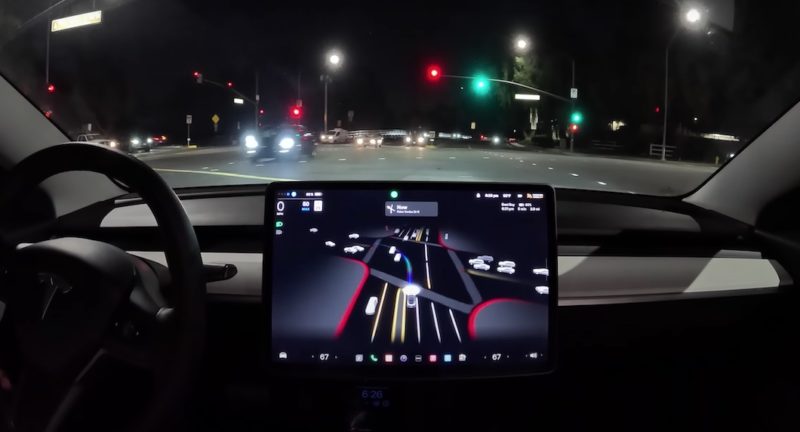Tesla has begun rolling out the much anticipated Full Self-Driving Beta v11 update, which has significant changes from the previous version.
The update essentially merges Tesla’s Autopilot and FSD software and uses more neural networks. It will allow drivers to set their destination in the navigation system and the car will drive there autonomously, executing all the manoeuvres required for everyday driving.
Although the car is driving itself Tesla stresses that the driver needs to remain vigilant and be ready to take over at all times.
The update has already been in use by a number of drivers since its initial release in November 2022 but the new version now being expanded to the more than 400,000 Tesla drivers in the FSD beta program.
New update includes new neural networks
Tesla’s vision based approach to solving autonomy uses cameras and artificial intelligence to identify everything around the car in real time.
Eight cameras give a 360 degree view of the car’s surroundings. Massive datasets and brain-like neural net learning enable Tesla’s autonomous software to accurately identify and map the car’s surroundings including signs, lane lines, intersections, vehicles and pedestrians.
The software uses artificial intelligence to “learn” how to correctly identify objects by using a billions of real-world driving videos that are fed through neural networks. Elon Musk says the new V11 update uses many new neural nets.
The software is so advanced that it can differentiate between sedans, utes, trucks and buses as well as motorbikes, scooters and bicycles. It can accurately identify pedestrians, traffic cones, wheelie bins and even dogs and place them in 3D space with astonishing precision.
Unlike the purely object based LiDAR system, the cameras can also identify and read traffic signage such as stop signs, traffic lights, speed limits, road works and even the arrows and symbols painted onto road surfaces.
It’s unclear if the rollout has reached Australia yet however North American Tesla owners reported receiving the new update last weekend. The rollout is expected to continue over the next week to others in the program.
Although over 400,000 people are in the ‘beta’ program, it is still considered a “testing” version with drivers expected to be in control of the vehicles at all times.

Daniel Bleakley is a clean technology researcher and advocate with a background in engineering and business. He has a strong interest in electric vehicles, renewable energy, manufacturing and public policy.

